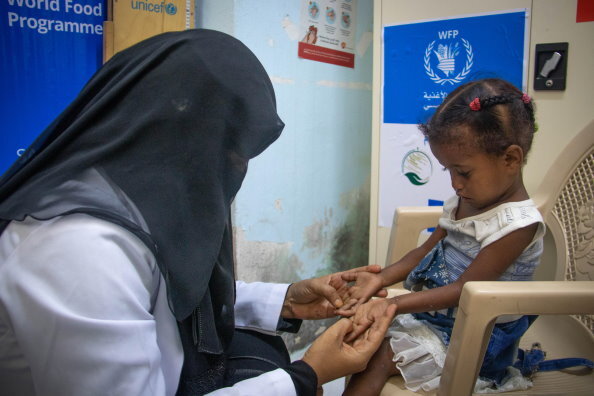New Report: Yemen sees return to alarming levels of food insecurity

ROME – The United Nations World Food Programme with the Food and Agriculture Organization of the United Nations, the United Nations Children's Fund and partners, today released the latest Integrated Food Security Phase Classification (IPC) analysis for 133 districts in Yemen.
The forecast:
More than 1 million more people in the southern areas of Yemen will face acute food insecurity by the end of the year, according to the analysis.
Acute food insecurity will increase from the current 25 percent of the population to 40 percent by the end of the year in the areas surveyed – an increase from 2 million people to 3.2 million people out of a surveyed population of 7.9 million.
There are 16 districts in eight governorates with the highest levels of food insecurity (IPC4): Ad Dhalee (3 districts), Marib (3), Al Bayda (2), Shabwah (2), Abyan (2), Taizz (2), Al Jawf (1) and Hadramaut (1).
The areas forecast to experience the worst deterioration over the next six months are Abyan, Aden, Ad Dhalee, Hadramaut, Lahj and Taizz.
Visual content
Recent broadcast quality footage
Quotes
David Beasley, WFP Executive Director
“The picture painted by the latest food security analysis for Yemen’s southern districts is truly heart-breaking. Unless the international community steps up with an urgent injection of funds, we are going to find ourselves right back where we were in 2018, when we had to fight our way back from the brink of a full-scale famine.
The Yemeni people have already been ravaged by years of conflict-fueled hunger and malnutrition, and now COVID-19 is ratcheting up their misery. The world needs to open its eyes to this unfolding humanitarian disaster before it’s too late.”
Laurent Bukera, WFP Country Director for Yemen
“Yemen is hanging by a thread. The forecast for the next few months is very concerning and it’s essential that we have the resources to be able to continue to deliver food assistance to the millions who rely on it. If we fail to act now, the consequences will be devastating”.
What WFP is doing:
- WFP provides 13 million people in Yemen with emergency food assistance and 1.1 million children and women with nutrition support.
- In some areas, families receive assistance on alternate months due to funding shortfalls.
- WFP urgently needs $737 million to continue to deliver food assistance to the end of 2020
- WFP may have to further reduce operations if additional funding is not secured.
# # #
The United Nations World Food Programme is the world’s largest humanitarian organization, saving lives in emergencies, building prosperity and supporting a sustainable future for people recovering from conflict, disasters and the impact of climate change.
Topics
Yemen Conflicts Emergencies Food securityContact
WFP spokespeople for interview:
Abeer Etefa, WFP/Cairo,
Mob. +201 0666 34352 (Languages: English & Arabic)
Annabel Symington, WFP/Yemen,
Mob. +44 7746397099 (Languages: English)
Elisabeth Byrs, WFP/Geneva
Mob. +41 79 842 8057 (Languages: English, French)
